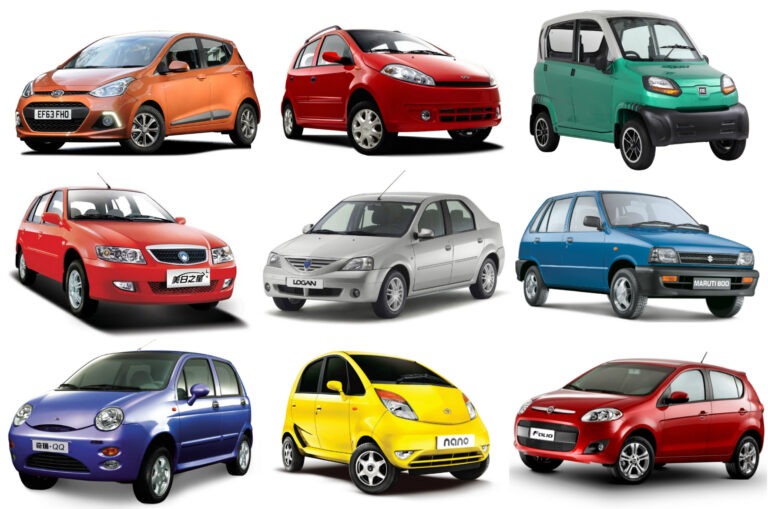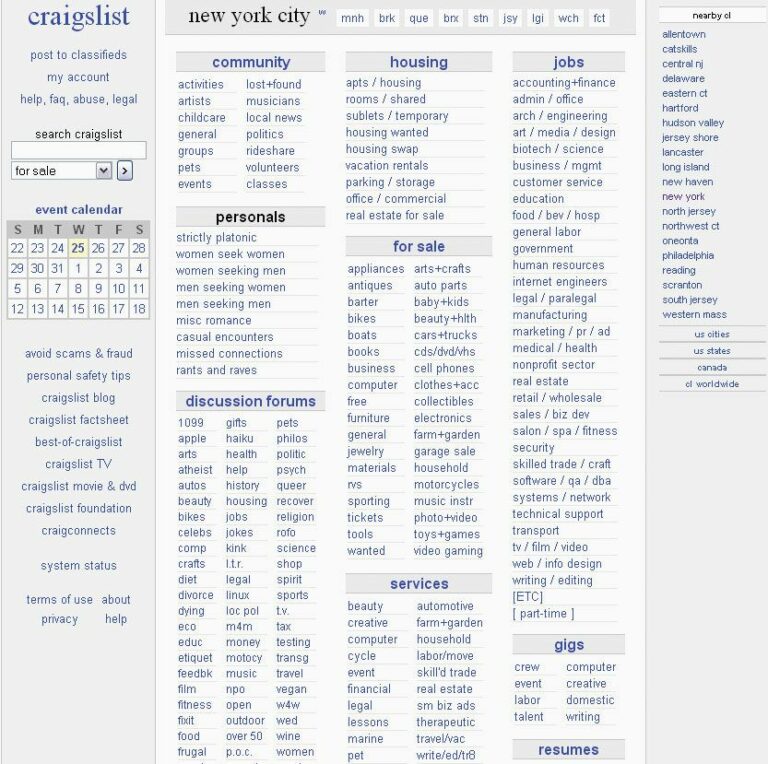The Cheapest Car Brand: Unlocking Affordable Mobility in a Cost-Conscious World
The Cheapest Car Brand: Unlocking Affordable Mobility in a Cost-Conscious World cars.truckstrend.com
In an era where every penny counts, the dream of car ownership often collides with the reality of soaring prices. For many, the quest for the "cheapest car brand" isn’t about compromising on quality, but rather about finding intelligent value and sustainable mobility. But what exactly defines the "cheapest car brand"? Is it simply the lowest sticker price, or is there a deeper, more nuanced understanding that encompasses the entire lifecycle of vehicle ownership? This comprehensive guide delves into the world of affordable automotive solutions, exploring the brands that consistently deliver value, the factors that contribute to their lower costs, and how consumers can make the smartest choices without sacrificing essential needs.
The term "cheapest car brand" is fluid and dynamic, varying by region, market conditions, and even specific model years. There isn’t one single, universally "cheapest" brand across the globe. Instead, it refers to a segment of manufacturers who consistently prioritize affordability, often targeting entry-level buyers, those seeking a practical second car, or individuals and families on a tight budget. These brands excel at delivering reliable transportation at the lowest possible barrier to entry, making car ownership accessible to a wider demographic. Understanding their approach and offerings is key to navigating the budget-friendly automotive landscape effectively.
The Cheapest Car Brand: Unlocking Affordable Mobility in a Cost-Conscious World
Defining "Cheapest": More Than Just the Sticker Price
To truly understand what makes a car brand "the cheapest," we must look beyond the initial purchase price and consider the Total Cost of Ownership (TCO). A car might have a low sticker price, but if it guzzles fuel, demands frequent, expensive maintenance, or commands exorbitant insurance premiums, its true cost can quickly escalate.
- Initial Purchase Price: This is the most obvious factor. Brands deemed "cheapest" consistently offer models with the lowest starting Manufacturer’s Suggested Retail Price (MSRP). This is achieved through simplified designs, fewer luxury features, and efficient manufacturing processes.
- Fuel Efficiency: A car that sips fuel will save its owner significant money over its lifespan, offsetting a slightly higher initial cost. Many budget brands prioritize smaller, efficient engines.
- Maintenance and Parts Cost: Parts for affordable cars are often mass-produced, readily available, and designed for simpler repair procedures, leading to lower labor and material costs for routine maintenance and unexpected repairs.
- Insurance Premiums: Insurers often factor in the car’s value, repair costs, and safety ratings. Generally, less expensive, less powerful cars tend to have lower insurance premiums.
- Depreciation: While often overlooked, depreciation – the loss of value over time – is a significant cost. While some budget cars might depreciate quickly, others, especially those with strong reputations for reliability, can hold their value surprisingly well within their segment.

Therefore, the "cheapest car brand" is ultimately one that offers the lowest TCO, providing genuine, long-term value to its owners.
Key Players in the Affordable Car Market: Brands Leading the Charge
While the specific models and their availability vary by country, certain car brands consistently emerge as front-runners in the budget-friendly segment due to their philosophy of affordability and practicality.
- Dacia (Renault Group): Perhaps the quintessential "cheapest" car brand in many European markets. Dacia, a Romanian subsidiary of Renault, is renowned for its no-frills, highly practical, and incredibly affordable vehicles. They achieve this by using proven, older Renault platforms and components, focusing on essential features, and offering simple trim levels. Models like the Sandero, Logan, and Duster are synonymous with unbeatable value.
- Suzuki: Globally, Suzuki is a strong contender, particularly known for its compact, fuel-efficient, and durable vehicles. Models like the Swift, Alto, and Celerio offer excellent value, low running costs, and a reputation for reliability, especially in Asian and emerging markets.
- Kia and Hyundai: While both Korean brands have significantly moved upmarket in recent years, they still maintain strong entry-level offerings that provide excellent value for money. Cars like the Kia Picanto, Rio, and Hyundai i10, i20, and Venue often come packed with more features and better warranties than competitors at similar price points, making them compelling choices for budget-conscious buyers.
- Mitsubishi: Though its global lineup has shrunk, Mitsubishi often offers competitive pricing and strong warranties, particularly on models like the Mirage (Space Star in some markets) and Attrage/Mirage G4. These vehicles are designed for global markets where affordability and reliability are paramount.
- Chinese Brands (e.g., Chery, Geely, MG, BYD): These brands are rapidly expanding their global footprint and are increasingly challenging established players on price. While their availability and reputation vary significantly by region, they often offer feature-rich cars at highly competitive prices, particularly in SUV and EV segments. As their quality and safety ratings improve, they are becoming significant forces in the affordable car market.

The Anatomy of Affordability: How Budget Brands Keep Costs Down
The ability of these brands to offer vehicles at such competitive prices isn’t magic; it’s a result of deliberate strategic choices in design, manufacturing, and marketing:
- Simplified Design & Fewer Features: Budget cars often forgo complex infotainment systems, premium interior materials, advanced driver-assistance systems (ADAS), and powerful engines. The focus is on core functionality.
- Shared Platforms & Components: Utilizing older, proven platforms and sharing components across multiple models (often within a larger automotive group, like Dacia with Renault) drastically reduces research and development costs.
- Economies of Scale: Producing high volumes of a relatively limited number of models allows for bulk purchasing of materials and efficient assembly lines, driving down per-unit costs.
- Targeted Markets & Marketing: These brands often focus on markets where price sensitivity is high, and their marketing emphasizes practicality, reliability, and value over luxury or performance.
- Focus on Essentials: Every design decision is scrutinized for cost-effectiveness. This means simpler headlights, manual air conditioning, steel wheels with hubcaps, and basic instrumentation are common.
Benefits of Opting for a Budget-Friendly Brand
Choosing a vehicle from a "cheapest car brand" comes with a host of practical advantages that extend beyond just saving money upfront:
- Lower Entry Barrier: Makes car ownership accessible to a wider range of people, including first-time buyers or those with limited budgets.
- Reduced Running Costs: Generally lower fuel consumption, cheaper insurance, and more affordable maintenance mean significant savings over the car’s lifetime.
- Less Financial Stress: A smaller car payment and lower overall running costs can free up household budget for other necessities or savings.
- Practicality & Durability: Many budget cars are designed with simplicity and robustness in mind, making them ideal for daily commuting, city driving, and often, surprisingly resilient in diverse conditions.
- Ideal for New Drivers or Second Cars: Their affordability and ease of repair make them excellent choices for learners or as a reliable backup vehicle for families.
- Lower Depreciation in Absolute Terms: While percentage-wise depreciation can sometimes be high, the actual monetary loss is typically less than on a more expensive vehicle.
Important Considerations Before You Buy: Navigating the Budget Car Landscape
While affordability is appealing, making an informed decision requires careful consideration of several factors beyond price:
- Safety Features and Ratings: Always check independent safety ratings (like Euro NCAP or local equivalents). While budget cars might lack advanced ADAS, they should still offer essential safety features like airbags, ABS, and stability control. Modern budget cars are significantly safer than their predecessors.
- Reliability and Build Quality: Research owner reviews and long-term reliability studies. A car might be cheap to buy but expensive to own if it’s constantly breaking down. Brands like Suzuki and Dacia (with Renault’s engineering) often score well here.
- Resale Value: While often lower than premium brands, a well-maintained budget car from a reputable brand can still command a decent resale value within its segment.
- Warranty and After-Sales Service: A good warranty provides peace of mind. Check the length and terms of the warranty, and ensure there’s a good network of service centers in your area.
- Essential Features vs. Luxuries: Determine what features are absolute necessities for your daily driving. Do you need power windows, a touchscreen, or cruise control? Budget cars will likely offer fewer creature comforts.
- Test Driving and Research: Never skip a test drive. Pay attention to ride comfort, engine noise, handling, and visibility. Read professional reviews and compare specifications across different models.
Tips for Maximizing Value When Buying a "Cheapest" Car
- Prioritize Needs Over Wants: List your absolute must-have features (e.g., air conditioning, specific safety features) and be willing to forgo non-essentials.
- Compare Total Cost of Ownership (TCO): Use online calculators or research to estimate fuel, insurance, maintenance, and potential depreciation for different models over 3-5 years.
- Explore Used Car Options: A slightly used car from a reputable budget brand can offer even greater savings, as the initial depreciation hit has already occurred.
- Negotiate Wisely: Even with budget cars, there’s often room for negotiation on the price or to include accessories.
- Understand Trim Levels: Often, the base model offers the best value. Higher trim levels quickly add costs for features you might not need.
- Factor in Insurance and Maintenance: Get insurance quotes before buying, and research common maintenance costs for the models you’re considering.
Challenges and Solutions: Overcoming Perceptions and Realities
Choosing a budget car isn’t without its challenges, but most have practical solutions:
- Limited Features/Tech:
- Challenge: Fewer advanced tech features, basic interiors, less powerful engines.
- Solution: Focus on the core purpose of the car – transportation. If you need navigation, use your smartphone. If you want better audio, consider aftermarket upgrades.
- Perceived Lower Prestige/Quality:
- Challenge: Some people associate "cheap" with "poor quality" or "lack of status."
- Solution: Educate yourself on the brand’s reliability. Modern budget cars often have excellent build quality and safety. Focus on your practical needs, not societal perceptions.
- Potential for Higher Depreciation (case-by-case):
- Challenge: Some budget models might depreciate faster percentage-wise.
- Solution: Research specific models. Brands with strong reliability and demand in the used market (like Suzuki or Dacia in some regions) can hold value well. Focus on absolute monetary depreciation rather than percentage.
Table: Representative Examples of Affordable Car Models (Estimated Pricing)
This table provides representative examples of models from brands consistently offering affordable vehicles. Please note: Prices are estimated starting MSRPs, can vary significantly by region (country, state/province), trim level, optional features, taxes, and current market conditions. They are provided for illustrative purposes only.
| Brand | Model | Estimated Starting MSRP (USD) | Key Feature/Note | Primary Market Focus |
|---|---|---|---|---|
| Dacia | Sandero Stepway | $13,000 – $16,000 | Robust, practical, excellent value for money. | Europe, Emerging |
| Suzuki | Alto | $9,000 – $12,000 | Ultra-compact, incredibly fuel-efficient, city car. | Asia, Emerging |
| Suzuki | Swift | $15,000 – $19,000 | Fun to drive, reliable, good all-rounder. | Global |
| Kia | Picanto (Morning) | $14,000 – $17,000 | Stylish, feature-rich for its class, good warranty. | Global |
| Hyundai | i10 | $14,500 – $18,000 | Comfortable, well-equipped city car. | Europe, Asia |
| Mitsubishi | Mirage (Space Star) | $15,000 – $17,000 | Very fuel-efficient, long warranty. | Global |
| Chery | Arrizo 5 | $10,000 – $14,000 | Spacious sedan, competitive pricing. | Emerging, Asia, SA |
| MG | MG3 | $15,000 – $18,000 | Feature-packed subcompact, strong value. | UK, Australia, Asia |
Prices are highly variable and serve only as a general guide. Always check local dealerships and official brand websites for current pricing and availability.
Conclusion: Smart Choices in the Affordable Automotive World
The concept of "the cheapest car brand" is less about finding a single, static entity and more about identifying manufacturers that consistently prioritize affordability, total cost of ownership, and practical value. Brands like Dacia, Suzuki, Kia, Hyundai, and emerging Chinese players are making car ownership accessible to millions by focusing on essential features, efficient manufacturing, and robust reliability.
Choosing a car from this segment doesn’t mean settling for less; it means making a smart, informed financial decision. By understanding the true definition of "cheapest" (which encompasses running costs and depreciation), diligently researching safety and reliability, and prioritizing needs over wants, consumers can unlock affordable mobility without compromising on their core transportation requirements. The cheapest car brand, in essence, is the one that delivers the most value for your money, empowering you to drive confidently and cost-effectively into the future.
Frequently Asked Questions (FAQ)
Q1: Is the cheapest car brand safe?
A1: Modern "cheapest" cars from reputable brands are designed to meet stringent safety standards. While they might lack some advanced driver-assistance systems found in premium cars, they typically include essential safety features like multiple airbags, ABS, and electronic stability control. Always check independent crash test ratings (e.g., Euro NCAP, ANCAP, NHTSA) for specific models.
Q2: Do affordable cars last as long as more expensive ones?
A2: Yes, many affordable cars, particularly from brands like Suzuki, Kia, Hyundai, and Dacia, have excellent reputations for reliability and durability. Their simpler designs often mean fewer complex components to go wrong. With proper maintenance, they can last just as long as more expensive vehicles, offering many years of dependable service.
Q3: What’s the main difference between a "cheap" car and a "value for money" car?
A3: A "cheap" car might just have a low sticker price without considering long-term costs. A "value for money" car, on the other hand, offers an excellent balance of initial price, low running costs (fuel, insurance, maintenance), reliability, and essential features, leading to a low total cost of ownership. The "cheapest car brand" should ideally represent "value for money."
Q4: Should I buy new or used from a budget brand?
A4: Both have merits. Buying new gives you the full warranty and the latest features. Buying a slightly used model (1-3 years old) from a budget brand can offer even greater savings, as the steepest depreciation has already occurred, and you can often get a higher trim level for the price of a new base model. Consider your budget and long-term plans.
Q5: Are spare parts for budget cars readily available and affordable?
A5: Generally, yes. Brands that focus on affordability often use widely available, common parts, sometimes shared across different models or even brands within a larger group. This makes parts more accessible and typically cheaper than those for luxury or niche vehicles, contributing to lower maintenance costs.
Q6: How often should I service a budget car?
A6: Service intervals are typically determined by the manufacturer’s recommendations, usually every 10,000-15,000 miles (or 15,000-25,000 km) or once a year, whichever comes first. Sticking to the recommended service schedule is crucial for maintaining reliability, warranty validity, and the car’s longevity, regardless of its initial price.




